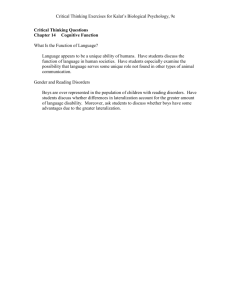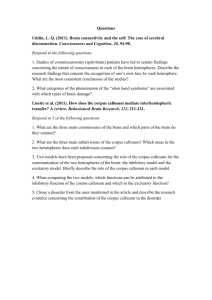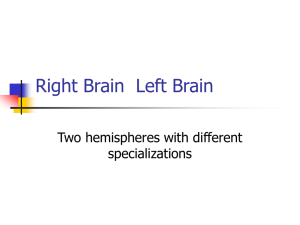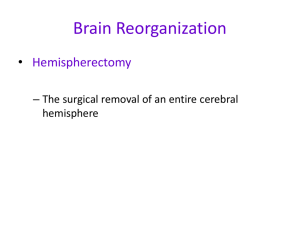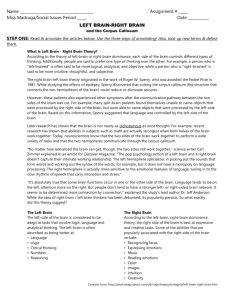Sex on the Brain: The Corpus Callosum, Lateralization, and Gender
advertisement
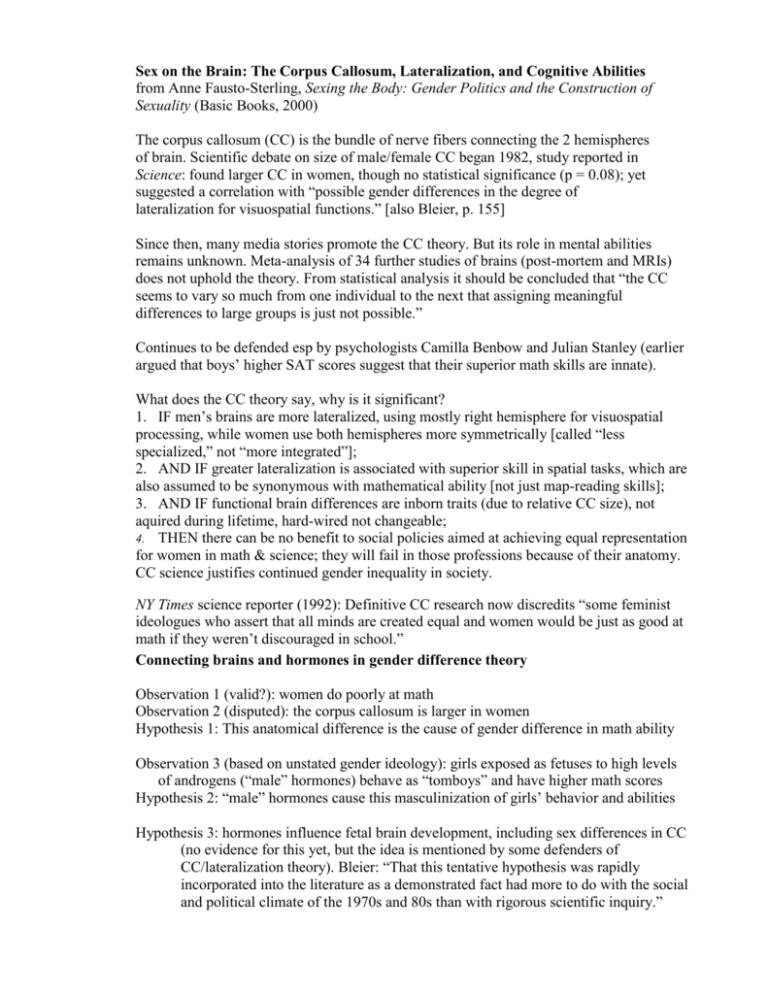
Sex on the Brain: The Corpus Callosum, Lateralization, and Cognitive Abilities from Anne Fausto-Sterling, Sexing the Body: Gender Politics and the Construction of Sexuality (Basic Books, 2000) The corpus callosum (CC) is the bundle of nerve fibers connecting the 2 hemispheres of brain. Scientific debate on size of male/female CC began 1982, study reported in Science: found larger CC in women, though no statistical significance (p = 0.08); yet suggested a correlation with “possible gender differences in the degree of lateralization for visuospatial functions.” [also Bleier, p. 155] Since then, many media stories promote the CC theory. But its role in mental abilities remains unknown. Meta-analysis of 34 further studies of brains (post-mortem and MRIs) does not uphold the theory. From statistical analysis it should be concluded that “the CC seems to vary so much from one individual to the next that assigning meaningful differences to large groups is just not possible.” Continues to be defended esp by psychologists Camilla Benbow and Julian Stanley (earlier argued that boys’ higher SAT scores suggest that their superior math skills are innate). What does the CC theory say, why is it significant? 1. IF men’s brains are more lateralized, using mostly right hemisphere for visuospatial processing, while women use both hemispheres more symmetrically [called “less specialized,” not “more integrated”]; 2. AND IF greater lateralization is associated with superior skill in spatial tasks, which are also assumed to be synonymous with mathematical ability [not just map-reading skills]; 3. AND IF functional brain differences are inborn traits (due to relative CC size), not aquired during lifetime, hard-wired not changeable; 4. THEN there can be no benefit to social policies aimed at achieving equal representation for women in math & science; they will fail in those professions because of their anatomy. CC science justifies continued gender inequality in society. NY Times science reporter (1992): Definitive CC research now discredits “some feminist ideologues who assert that all minds are created equal and women would be just as good at math if they weren’t discouraged in school.” Connecting brains and hormones in gender difference theory Observation 1 (valid?): women do poorly at math Observation 2 (disputed): the corpus callosum is larger in women Hypothesis 1: This anatomical difference is the cause of gender difference in math ability Observation 3 (based on unstated gender ideology): girls exposed as fetuses to high levels of androgens (“male” hormones) behave as “tomboys” and have higher math scores Hypothesis 2: “male” hormones cause this masculinization of girls’ behavior and abilities Hypothesis 3: hormones influence fetal brain development, including sex differences in CC (no evidence for this yet, but the idea is mentioned by some defenders of CC/lateralization theory). Bleier: “That this tentative hypothesis was rapidly incorporated into the literature as a demonstrated fact had more to do with the social and political climate of the 1970s and 80s than with rigorous scientific inquiry.”
